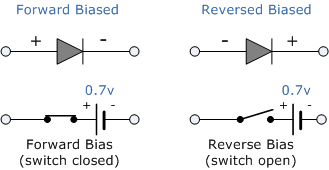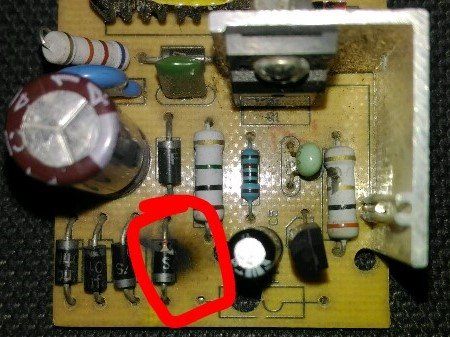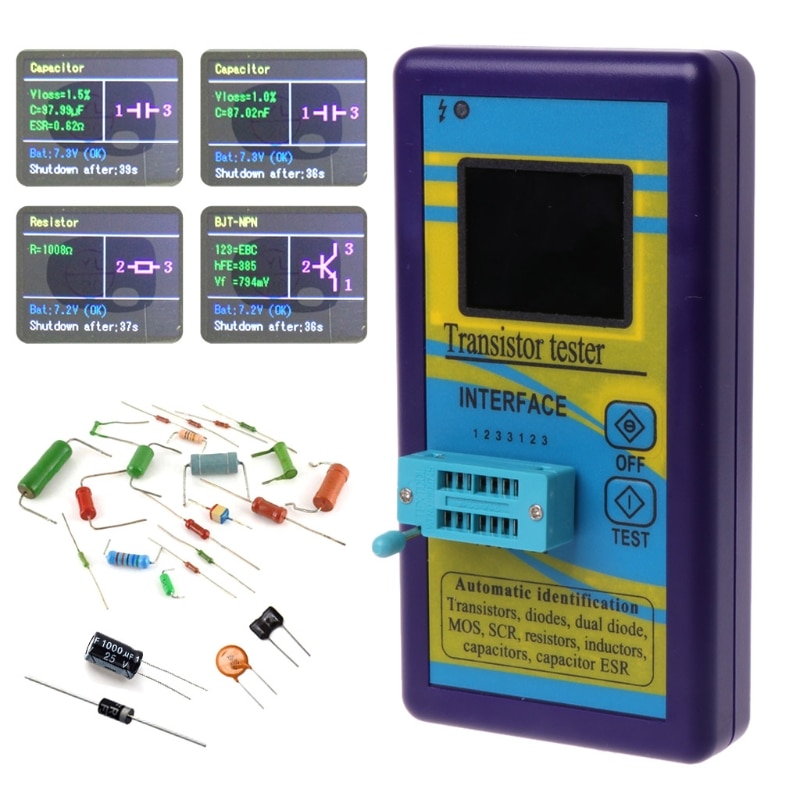Bad Diode Symptoms (Know if a diode is bad 2025)
To know if a diode is bad or good you need to look at these two bad diode symptoms.
First, the diode is behaving as an open circuit. Second, is it behaving like a short circuit. Other than the above technical measures you can also tell a bad diode by a simple visual inspection. There is a very interesting method that you can also apply to identify a bad diode.
In this article, we’ll learn about all the above methods in detail.
Bad diode symptoms
To better understand the identification process of a bad or good diode. I think you should first understand the basic working of a normal diode.
Ideally, a diode acts as a short circuit when we bias it in a forward condition. It acts as an open circuit when it is in reverse bias mode.
Simply saying, a diode is a switch. It is ON (allowing the current) when forward biased, and it is OFF (does not allow the current flow) when reversed biased.

So, you know, to judge a diode if it’s bad or good. We need to just check and verify these operations of the diode. If these operations are ok then we say the diode is a good one. But if there is a problem with these operations – there is a bad diode.
Alright!
Let’s see in detail how to perform these tests in real-time.
But hay! Instead of these tests there are two more simple methods that we can use to check for a bad diode. Let’s see them as well.
Remember the below methods are applicable to both off circuit and in circuit diode testing. Just keep in mind – there are certain cases where you need to desolder one leg of the diode when testing it in the circuit. But feel worry free to apply the methods if you are testing off circuit diodes.
Method 1: Visual inspection
As the name tells the whole picture. In this method, we try to figure out a bad diode just by seeing it.

Usually following are the bad diode symptoms:
- You can clearly see it burnt out.
- It is broken
- There is a small crack
- The color of the body has been changed
- Terminals at the PCB board are turned black – in some cases
- Heats up way too quickly
- There is a noise in the system – if your diode is in the circuit, especially the ripples are increased in power supply output.
By applying the above you can eliminate the very obvious bad diodes. But you will find such cases in rare situations where there occurred a huge current flow.
Usually, circuits are protected from overcurrent flow. But this happens when the manufacturers want to save some costs while keeping the prices low for consumers.
Method 2: Open circuit test
One of the bad diode symptoms is that – a bad diode acts openly in both forward and reverse bias mode.
To do this test, we need to have a multimeter with a diode test function. Almost every multimeter these days has this option.
If your multimeter doesn’t have this option. You can carry out this test using the resistance function. But I would really recommend not to go with that method as it may lead to false results in most of the in-circuit testing.
So follow the following easy steps to identify a bad diode:
- Take your multimeter and set it to the diode test function
- Take your diode
- Forward bias case: Connect the red probe (+ive) to the anode of the diode. And connect the black probe (-ive) to the cathode of the diode.
- Take the readings.
- Reverse the probe connection, i.e. make the diode reverse bias.
- Again take the readings
A good diode will show you reading between 0.4 to 0.8V in the forward case and will show OL in reverse bias case
However, a bad diode will show OL in both cases. This means your diode is open circuit.
Remember in diode test mode the results showing on the display are in mV range.
Method 3: Short circuit test
The second bad diode symptom is that – a bad diode acts shortly in both forward and reverse bias mode.
Follow the same steps as we did for the open circuit test. Now, when you have the readings compare them to the following criteria.
As I shared above, a good diode will show the reading between 0.4 to 0.8V in the forward case and will show OL in the reverse bias case.
However, if you get the same results, i.e. approximately 0.4V in both cases. This means your diode is a short circuit. And it needs to be replaced.
No matter if your diode is open or short – both are the bad diode symptoms and this diode needs an immediate replacement.
Method 4: Hassle free test
The above multimeter method requires careful readings. And it is subjected to human errors. Also, you need to have an understanding of how to use a multimeter.
I am not saying the above methods are bad or something. I am just saying we have an easy alternative to the above – that simple.
This method requires a new tool called the component tester. This component tester is an amazing and fun tool to have in our labs. It makes our lives easy and most importantly, it shows we have a deep love for electronic devices.

Following are the steps to use this tool for diode testing:
- Turn on the tester
- Place your diode you want to test
- Press test button
- See the results on the screen.
- If the diode is fine you will see a forward voltage drop of 0.7V for Si and 0.3V for Ge.
- If the diode is bad you will see no results – it is that easy.
As this method seems interesting. And you should try this definitely. But this method has a fundamental limitation. You can’t use it for in-circuit testing.
Moreover, life and electronics are about experiences. It is never about perfection. Though this method has limitations it doesn’t mean you should avoid it. I mean you can connect external wires to it, and use it for in-circuit testing. Electronics is fun when you think outside the box.
Now, if the component tester mentioned above has got you curious and want to know more about it. Here is the link, M328 Component Tester (Product link), for your own further research and investigation.
Conclusion
You know a diode is one of the fundamental circuit components. You will find it in almost every electronics circuit.
But when it comes to identifying a bad diode we need to have an understanding of some bad diode symptoms. So that we can carefully replace the faulty diode from our circuit board.
A good diode acts short in forward bias mode allowing the current flow. And it acts open when reversed biased stopping the current flow.
But the big symptoms of a bad diode are – it acts open both forward and reverse bias mode, or it acts short for both the mentioned modes.
In this article, we look at the different ways we can identify such a bad diode solo or in a circuit board.
Following are the methods we try to understand.
- Method 1: Visual Inspection
- Method 2: Open Circuit Test
- Method 3: Short Circuit Test
- Method 4: Hassle Free Test
That is all I have for you to share. I hope you enjoyed my efforts.
Thank you and have a grateful life.
Other useful posts:

I really love this article. And I learned a lot. Thank you sir!
Welcome 🙂